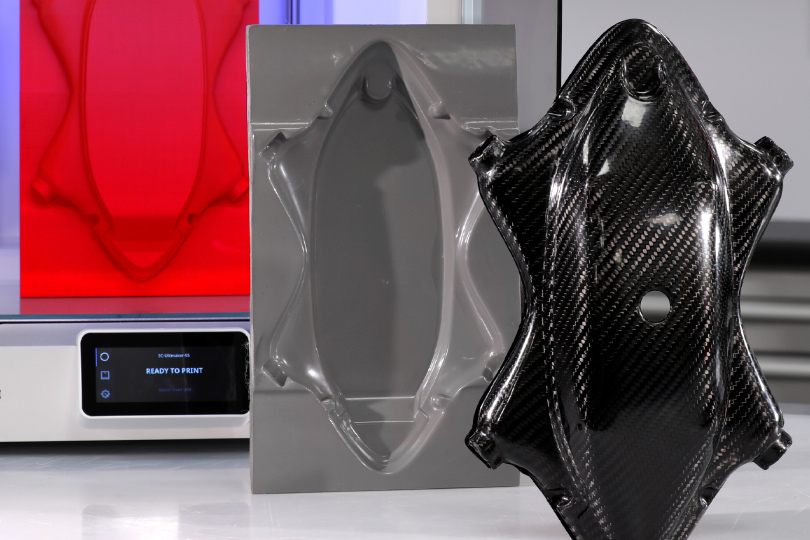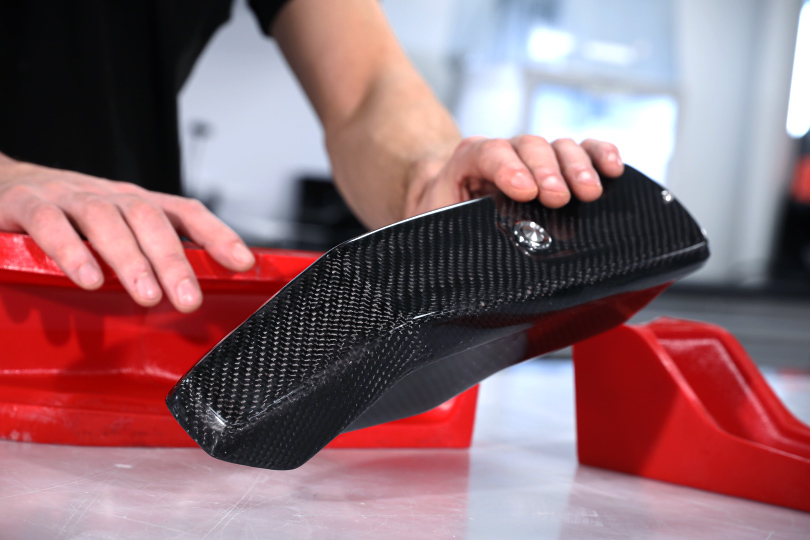Need any help or advice?+44 (0)1782 454499
VIDEOS IN THIS SERIES
This video is part 1 of a 2 part series:USED IN THIS PROJECT
Although not necessarily an exhaustive list, the following tools and materials, supplied by Easy Composites, were used in this project.
The quantity shown below is the approximate amount used in the project rounded up to the nearest available kit size or quantity.
COMPONENT MATERIALS
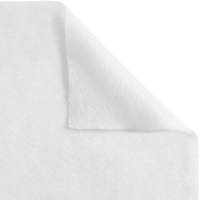
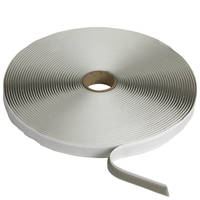
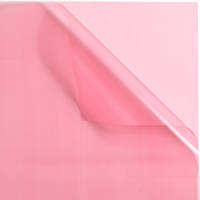
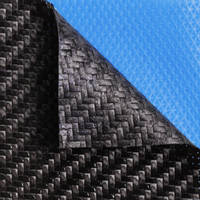
PATTERN MAKING MATERIALS
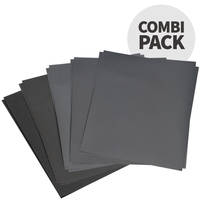
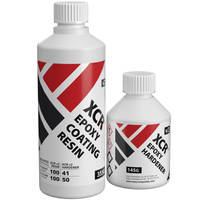
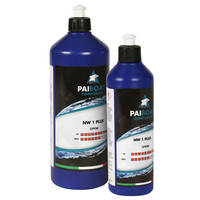
MOULD MAKING MATERIALS
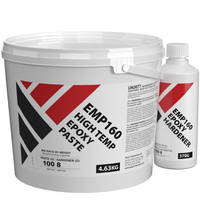
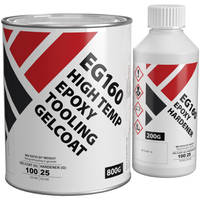
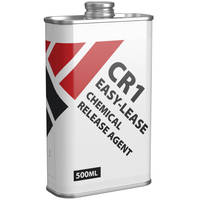
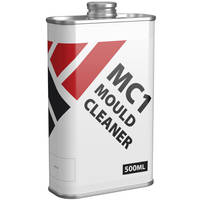
TOOLS & EQUIPMENT
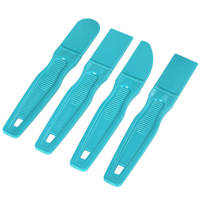
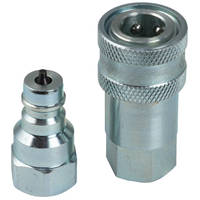
VIDEO TUTORIAL
Making a Composite Mould from a 3D Print
WHAT YOU WILL LEARN
In this video tutorial we work from a 3d printed pattern to create production ready moulds for carbon fibre parts. This process can be followed to make composite moulds suitable for wet-lay-up, vacuum bagging, resin infusion, and prepreg manufacturing techniques.
- How to use a 3d printer to create a pattern and prepare the surface for mould making.
- How to create moulds from 3d printed patterns using epoxy mould making material.
- How to use these moulds to make a prepreg carbon fibre part.
INTRODUCTION
There are many ways that patterns can be produced ranging from simple hand shaping by eye in materials such as wood and foam through to 5 axis CNC machining epoxy or polyurethane modelboard, in this tutorial we will be focusing on the use of FDM printers to create the initial pattern form. 3D printing technology makes for a cost-effective pattern making solution that is both fast and clean and is particularly well suited to development of small composite parts.
We will be taking an FDM print with the barriers already modelled and coating this with an epoxy coating that will both seal and smoothen the surface. After flatting and polishing this pattern can then be used to create a mould using any conventional room temperature curing mould making method. In this project we will use the high-temperature capable EG160 high temperature epoxy gelcoat and EMP160 high temperature epoxy laminating paste.
Once the moulds have been produced we will go on to manufacture the component using the XPREG XC110 out of autoclave carbon fibre prepreg.
Material Compatibility
There are a wide range of print materials that can be used for pattern making however we strongly recommend using PLA or ABS, not only are these to most readily available print filaments but the resulting print will also offer good adhesion with the XCR Epoxy Coating Resin that is used to seal and smoothen the print. Other print materials my offer a reduced bond so a small test for compatibility should be conducted if you plan to use a different type.
The pattern will then be coated with XCR coating resin, this is a specifically developed coating resin and offers both excellent substrate adhesion and surface levelling and gloss properties. Once cured the XCR coating resin can be used to produce moulds from all conventional mould making materials including epoxy, polyester and vinylester.
The next compatibility question is that with the chosen mould making system; this must be compatible with the final production technique, in this project we have used the high temperature epoxy EG160/EMP160 combination as we needed the mould to be able to withstand elevated temperature processing for prepreg, however for ambient temperature use moulds for wet-lay-up, vacuum-bagging or resin infusion, systems such as Uni-Mould or EG60/EMP60 could be used. The main type of tooling that is not recommended to be taken from 3d printed patterns is prepreg tooling such as XT135 as the elevated temperature and vacuum is liable to significantly distort or collapse the 3d print.
Materials & Equipment Needed
Printing Equipment and Materials
You will need a properly configured and setup FDM printer, in this project we have used the excellent Ultimaker S5 which with its pre-sets and intuitive user interface makes 3D printing easy, however any printer that is properly configured can be used. If you are looking for advice on 3d printing we would be happy to recommend our suppliers Dynamism.
We recommend using PLA filament, not only it this one of the most readily available and reliably printed materials but it also offer good adhesion to the coating resin.
Pattern Coating and Finishing Materials
XCR Epoxy Coating Resin is specifically designed for high quality coating applications and has been proven to offer unbeatable bond to the print, and surface finish when coating FDM 3D prints. Typically XCR is applied at around 300-500 grams per square meter; for smaller patterns you will need to factor a larger proportions to wastage (in the mixing cups brushes etc).
After coating the pattern will normally require flatting with 800 and 1200 grit wet-and-dry abrasive paper and then polishing with NW1 cutting compound.
Mould Making Materials
In this project we are using a high temperature gelcoat and laminating paste which cures initially at room temperature but can be used in elevated temperature processes after releasing from the pattern. The mould making methods would be exactly the same if the moulds were to be made from the standard temperature epoxy system EG60 and EMP60.
Component Materials
The component is made using 1 ply of XPREG XC110 210g 2/2 prepreg carbon fibre with some localised areas with a second ply to increase strength where required. The vacuum bagging materials are R210 unperforated release film, BR180 breather cloth, VB160 vacuum bagging film and ST150 sealant tape.
Prepreg Processing Equipment
For the vacuum bagging and vacuum hold during the cure we used the EC4 composites vacuum pump and the temperature controlled cure was done in our benchtop OV301 composites curing oven.
PROJECT BREAKDOWN
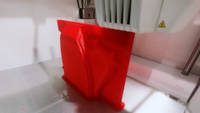
1. Create the print
The part should be modelled including the flange barriers and printed in PLA, although you will need to establish the most appropriate setting for you printer, generally the print settings can be set into a faster 'draught' print profile with a larger 0.2mm layer height as layer lines at this resolution will be easily covered by the following epoxy coating, shell thickness it typically set to 0.8mm with a 20% fill. If your project demands higher accuracy, a higher resolution can be chosen.
Although not required in many projects; for more dimensionally critical applications the surface of the part should be offset by around 0.25mm to allow for the thickness of the epoxy coating.
Patterns that are larger than the print volume can be printed in sections and then bonded together with an appropriate adhesive, for PLA both cyanoacrylate (super-glue) and epoxy adhesives are very effective.
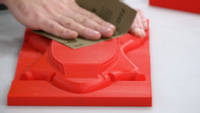
2. Smooth and 'key' the pattern
To provide a smoothed sealed surface the pattern needs to be coated with epoxy, without this the pattern would be difficult to remove from a mould and the surface finish on the mould would feature the less than perfect surface from the 3d print. To prepare the pattern for coating it should first be abraded with 240 grit sand-paper, this serves 2 purposes, firstly it removes and high-spots or blemishes that may have been left by the 3d printer, secondly it provides a good 'key' for the epoxy coating to bond to.
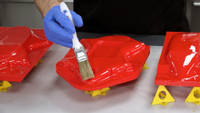
3. Coat the 3D print with XCR Epoxy Coating Resin
The pattern can now be coated with the XCR coating resin, typically you will need around 300grams per square meter for each coat applied, in practice for small patterns you will need to mix more than this to allow for the wastage in the mixing cups and brush. The hardener should be added to the resin in the exact ratio of 100:35 as accurately as possible for small batches of resin scales with 1/10 gram accuracy will help. It is best practice to mix the resin in one cup then transfer to a second cup and mix again to ensure that there is no unmixed resin trapped.
The resin should not be sprayed, the application method it to brush a thin and even coat steadily over the surface using a method like that of gloss painting, care should be taken not to overload the surface as this will lead to runs in the coating. After applying the coat, it should be checked a few minutes later for any runs, any excess resin should then be removed with a brush as required.
For most pattern 2 coats of resin will be needed, this second coat should be applied when the first has reached the B-stage; for XCR this will typically be 3 hours but will vary depending upon room temperature. To identify if the resin is at the correct stage it should feel tacky to a gloved finger but not leave a residue, at this point the second coat can be mixed and applied as-per the first.
The resin should now be left to fully cure which depending upon temperature will be 12-24hrs.
CAUTION: do not leave the mixed XCR resin in the bottom of the mixing cup if deeper that 5mm, this can undergo a thermal runaway which will potentially be dangerous. Excess resin should be poured into a tray to increase the surface area and/or the container should be moved to a safe outdoor location in case of over-heating.
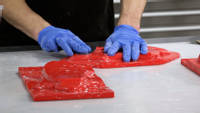
4. Flatting and polishing the XCR coating
Although it would be possible to apply release agent and create a mould directly from the XCR as left from the brush coating, flatting and polishing the surface is generally required to achieve a precise finish.
The flatting process should start with the finest grade of paper that can be used to quickly flat-down the surface, this is a matter of judgment but generally this will be either 400 or 800 grit wet and dry. This is best done wet to prevent the paper from clogging and the grades should be worked through to a minimum of 1200grit, the compound curved areas are done with the paper alone and then for the flat areas and single curvatures it is wrapped around a block to maintain a perfectly flat face. whenever you change through to a finer grade of abrasive it is important to clean the pattern and change the water as it ensures that to don’t simply rub around particles of the previous grade causing scratches.
From the 1200grit (or finer) we can continue with the final polish, for this we are using the NW1 polishing compound, which is specifically designed for composite resins, unless your pattern is very small this is definitely best done with a foam pad on a polishing machine, but if you have the perseverance it is possible to do entirely by hand.
Unlike many compounds the NW1 does not need water and does not quickly dry out, This particular compound is self-diminishing so the more you work it the finer it gets and should be able to take you to a full mirror polish in one step, once buffed the last residue of the compound can be wiped away with a microfibre cloth which should reveal a mirror like polish on your finished pattern.
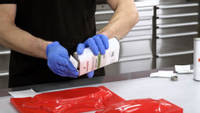
5. Coat with release agent
Before making the mould the pattern needs to be coated with release agent to prevent the pattern and the mould bonding together. Most composite release systems such as wax and PVA can be used but we would recommend using the highly reliable Easylease chemical release agent, which is what is used in this and indeed most of our other projects.
Pattern cleaning and release agent application should be performed in a well-ventilated area. After cleaning the pattern surface apply the Easy-Lease™ Chemical Release Agent in a thin film over the surface of the mould using a small piece of lint-free cloth.
Once the film begins to evaporate (5-30 seconds) use a second piece of cloth lightly in a circular motion to remove the excess and even-out the film.
On a new pattern apply at least 6 coats leaving a minimum of 15mins between each application. Leave the final coat for at least 1 hour before laminating the mould. It is important to use lint free solvent application wipes as normal tissue papers can be attacked by the solvent and leave smearing, it is also important to use a fresh piece of cloth for each coat so that you don’t contaminate the release agent with partly cured material from the previous cloth.
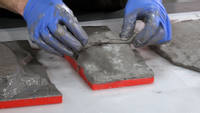
6. Use the finished pattern to make the mould
In this project we are using the high temperature version of our epoxy mould making system with comprises of the EG160 gelcoat and the EMP160 mould making paste, however patterns made using this technique can be used to make moulds using any conventional ambient temperature cure mould making process, so please refer to the technical information relevant to your chosen mould making process.
Applying the gelcoat: The EG160 Epoxy Tooling Gelcoat is mixed carefully and fully according to the instructions. In this tutorial we will be 'double-gelling' whereby the gelcoat is applied in two, even applications.
The first application of gelcoat is thoroughly mixed and applied directly onto the prepared pattern at a thickness of approximately 500g per square metre, or around 0.5mm.
The first application is then allowed to cure to the 'B-stage', where it is firm but still tacky. The exact timing of this will vary according to temperature but at 20°C this will be around 5hrs.
Once the first application has cured to the B-stage, a second application of gelcoat is applied. The second application is mixed and applied just the same as the first, aiming to keep the gelcoat as smooth and even as possible. This second layer of gelcoat is now also allowed to cure to the B-stage.
As soon as the second application of gelcoat has cured to the B-stage, the main reinforcement for the mould can be applied. It is very important to not allow the gelcoat to cure past the B-stage otherwise it will become too hard and dry and the laminating paste will not be able bond properly to it. In the case of the high temperature system, we strongly recommend applying a thin coat of EG160 gel immediately prior to the mould making paste to act as a ‘coupling-coat’ which will promote the bond of the interface.
EMP160 is an epoxy-resin based laminating paste. The paste contains resin, filler and chopped glass fibre strands for reinforcement and so can be used on its own as the main reinforcement for the mould. The advantage to a laminating paste is that the fine, paste-like material is very easy to work into corners and details, reducing the risk of air-voids and providing a fast and reliable means of reinforcing an epoxy-based mould.
EMP160 is thoroughly mixed according to the instructions and then applied directly onto the wet coupling coat of EG160 gelcoat at a thickness of around 10mm before being left to fully cure. Care should be taken to avoid trapped air under the reinforcement, generally is it best to ‘tile’ the surface with smaller amounts.
EG/EL/EMP160 can be cured to a demouldable state in 24hrs at 25C but at this stage can be brittle and prone to cracking during demoulding of more complex mould shapes. Therefore, in most cases, it is recommended to conduct the initial cure at 40C (whereby the cure time can be reduced to 12hrs). Conducting the initial cure at 40C is low enough to avoid distortion of the pattern whilst still curing the resin to an adequately non-brittle state to demould without risk of damage.
Recommended: 12hrs @ 40C
Alternative: 24hrs (min) @ 25C - Warning: Resin will be very brittle before post-cure
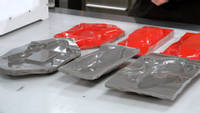
7. Separate the mould from the pattern and prepare for use
After the mould has been allowed to fully cure it can be removed from the pattern, removing any excess material from the perimeter will often help with the release, plastic wedges can then be used to carefully separate the mould from the pattern.
In the case of this high temperature mould, we now need to complete a post-cure on the mould, this involves as steady ramp in temperature up to the service temperature to condition the mould, information on this cure profile can be found in the datasheet for the product, for ambient temperature use moulds this step is not normally necessary.
Prior to use the mould is then coated with Easylease Release agent in the same way as the pattern was coated.
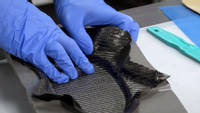
8. Laminate the part
There are many processes that you may choose to create your final component, for this particular project we have chosen to make the part using an out-of-autoclave prepreg process which requires a vacuum and and oven, please refer to our other guides if you would like information on the different processing options.
These part are to be made with an extremely thin (0.25mm) laminate which consists of only 1 ply of 210g XC110 prepreg carbon. The actual handling of the prepreg is relatively simple, however, great care must be taken to ensure the material is properly down in the mould. Generally work from the centre lowest point and work out systematically so that you do not end up bridging over any corners or detail.
Laminating tools called dibbers can be used here to help press the prepreg down into the mould. These tools can be made by hand, bought ready-made or using edges of other tools, e.g. the handle on shears. Again it is key to ensure there are no bridges or voids. Laying up other pieces around tight corners or detail may lead to creasing of the material or it lifting. In these areas, composite snips can be used to make small cuts to allow the material to lap and conform to the mould.
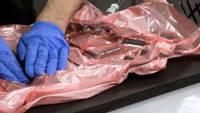
9. Vacuum bag the part
As these parts are only 1 ply thick the typical ‘de-bulking’ processes that are normally used in prepreg laminating are not required, instead the part can be put straight into the final vacuum bag ready for cure, this starts by applying a non-perforated release film to the prepreg. It is essential that this layer, just like the laminate itself, is carefully pressed onto the mould surface without any bridges. Once on the mould surface, rub with a cloth to press the release film firmly onto the material. You can use flash release tape to help hold the film in place if necessary.
For this size of part, it is only required to have breather on the underside and edge of the part to provide an air path. Not having breather on the material surface actually helps on complex shapes as the breather does not get in the way of the vacuum bag getting into the tight corners and detail.
The bag being created is an envelope bag with the mould placed directly into the bag. This is common with production of smaller prepreg parts as it is perfectly possible to place several small parts into one big vacuum bag and cure them all together. The through bag connector is placed on one corner on the breather to ensure there is a continuous air path.
Start by pulling only a partial vacuum, stopping the pull as necessary to position and move the bagging film. This stage it is critical to get the film into all the corners and recesses of the mould. Use creases of film to achieve this, as the vacuum increases the spare film in the crease will be pulled into the corner thus avoiding any bridging of the film. Once you are happy the bag is positioned correctly, a full vacuum can be pulled. Once a full vacuum is pulled, carry out a leak test for at least 10 minutes.
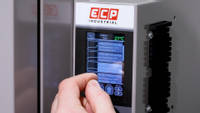
10. Oven-cure the prepreg
With the bag pulled down and successfully leak tested, it can now be put in the oven to cure. Place the bag carefully in the oven ensuring the bag cannot snag or catch on any edges causing a puncture. Connect the vacuum line inside the oven and connect the pump to the assembly outside. You can now run the pump allowing the bag to be maintained under full vacuum throughout the cure.
Close the oven doors and switch on the oven and program the cycle you wish to use. Our OV301 oven has a simple touch-screen interface allow quick programming, all of our standard cure cycles are pre-programmed from the factory.
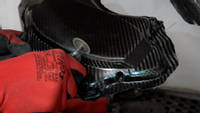
11. Demould the finished part
Once the oven curing cycle has completed, allow the part to fully cool to room temperature before attempting to demould. Failure to do so can cause surface defects and print through ruining the parts cosmetic surface. Once cool, remove from the oven and remove the bagging film a breather. The release film should easily pull off. At that stage, using demoulding wedges or other pointed items, taking care to avoid scratching the mould, carefully prise the edges of the part away from the mould, you may need to be systematic working around the mould to lift the part evenly from the mould until it comes free.
The demoulded part then just needs trimming and finishing with a suitable rotary cutting tool and carbide abrasive tools and papers to give a clean and nice edge to the part. The finished carbon fibre part can now be put into service.
DISCUSSION (4)
Please share any questions or comments you may have about this video tutorial.
LEAVE A COMMENT OR QUESTION
USED IN THIS PROJECT
Although not necessarily an exhaustive list, the following tools and materials, supplied by Easy Composites, were used in this project.
The quantity shown below is the approximate amount used in the project rounded up to the nearest available kit size or quantity.
COMPONENT MATERIALS




PATTERN MAKING MATERIALS



MOULD MAKING MATERIALS




TOOLS & EQUIPMENT


DISCUSSION (4)
Please share any questions or comments you may have about this video tutorial.
LEAVE A COMMENT OR QUESTION
100% SECURE
PAYMENT METHODS
Easy Composites EU B.V., registered in the Netherlands 73601195. All content copyright (C) Easy Composites Ltd, 2025. All rights reserved.
